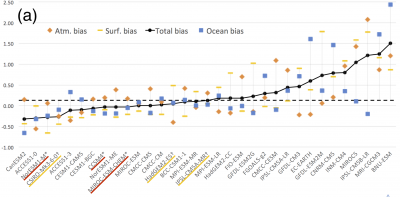Selecting Climate Forcing to Compare Ice Sheet Models
The Greenland and Antarctic ice sheets represent the largest and most uncertain contributions to global sea level rise over multidecadal to millennial timescales. The ice sheet model intercomparison project for CMIP6 (ISMIP6) brings together the ice sheet and climate modeling communities to gain understanding of the ice sheet contribution to sea level rise. ISMIP6 conducts stand-alone ice sheet experiments that use space- and time-varying forcing derived from atmosphere–ocean coupled global climate models to reflect plausible trajectories for climate projections, which requires selecting climate model output to convert into forcing for ice sheet models.
This study is a multi-institution, multi-disciplinary collaborative effort to quantify the skill of climate models near the Greenland and Antarctic ice sheets, and examine the multi-model uncertainty in projected 21st century changes in these regions. This effort resulted in identifying the climate models most suited to generate ice sheet forcing under RCP8.5, and thus essential to the development of the experiment protocol of the Ice Sheet Model Intercomparison Project (ISMIP6), which aims to deliver projections of the ice sheet contribution to sea level rise.
We compare existing coupled climate models to select a total of six models to provide forcing to the Greenland and Antarctic ice sheet simulations of the Ice Sheet Model Intercomparison Project (ISMIP6). We select models based on (i) their representation of current climate near Antarctica and Greenland relative to observations and (ii) their ability to sample a diversity of projected atmosphere and ocean changes over the 21st century.
Ocean, sea ice and atmosphere variables from 33 climate models of the CMIP5 ensemble are evaluated. The selected top 3 CMIP5 climate models are CCSM4, MIROC-ESM-CHEM, and NorESM1-M for Antarctica, and HadGEM2-ES, MIROC5 and NorESM1-M for Greenland. This model selection was designed specifically for ISMIP6, but can be adapted for other applications.

